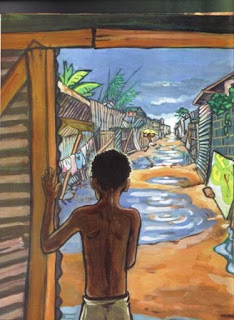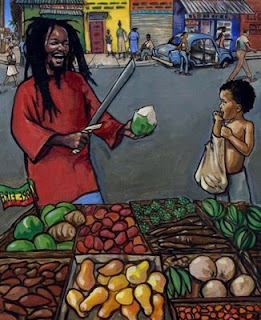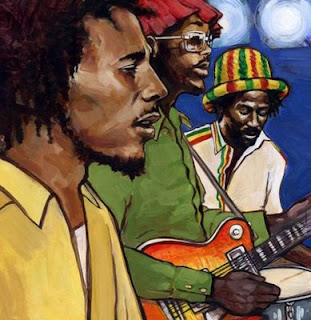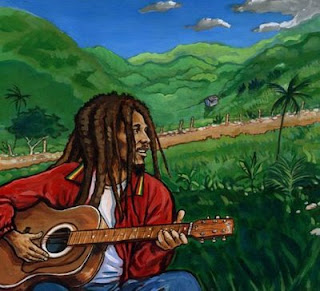|
Afghan War Leaks Expose Costly Folly
By Ray McGovern
July 26, 2010
|
The brutality and fecklessness of the U.S.-led war in Afghanistan have been laid bare in an undisputable way just days before the House of Representatives is scheduled to vote on whether to throw $33.5 billion more into the Afghan quagmire, when that money is badly needed at home.
On Sunday, the Web site Wikileaks released some 92,000 documents written mostly by U.S. forces in Afghanistan during a six-year period from January 2004 to December 2009. The authenticity of the material – published under the title “Afghan War Diaries” – is not in doubt.
The New York Times, which received an embargoed version of the documents from Wikileaks, devoted six pages of its Monday editions to several articles on the disclosures, which reveal how the Afghan War slid into its current morass while the Bush administration concentrated U.S. military efforts on Iraq.
Wikileaks also gave advanced copies to the British newspaper, The Guardian, and the German newsmagazine, Der Spiegel, thus guaranteeing that the U.S. Fawning Corporate Media could not ignore these classified cables the way it did five years ago with the “Downing Street Memo,” a leaked British document which described how intelligence was "fixed" around President George W. Bush’s determination to invade Iraq.
The Washington Post also led its Monday editions with a lengthy article about the Wikileaks’ disclosure of the Afghan War reports.
Still, it remains to be seen whether the new evidence of a foundering war in Afghanistan will lead to a public groundswell of opposition to expending more billions of dollars there when the money is so critically needed to help people to keep their jobs, their homes and their personal dignity in the United States.
But there may be new hope that the House of Representatives will find the collective courage to deny further funding for feckless bloodshed in Afghanistan that seems more designed to protect political flanks in Washington than the military perimeters of U.S. bases over there.
Assange on Pentagon Papers
Wikileaks leader Julian Assange compared the release of “The Afghan War Diaries” to Daniel Ellsberg’s release in 1971 of the Pentagon Papers. Those classified documents revealed the duplicitous arguments used to justify the Vietnam War and played an important role in eventually getting Congress to cut off funding.
Ellsberg’s courageous act was the subject of a recent Oscar-nominated documentary, entitled"The Most Dangerous Man in America," named after one of the less profane sobriquets thrown Ellsberg’s way by then-national security adviser Henry Kissinger.
I imagine Dan is happy at this point to cede that particular honorific to the Wikileaks’ leaker, who is suspected of being Pfc. Bradley Manning, a young intelligence specialist in Iraq who was recently detained and charged with leaking classified material to Wikileaks.
An earlier Wikileaks’ disclosure – also reportedly from Manning – revealed video of a U.S. helicopter crew cavalierly gunning down about a dozen Iraqi men, including two Reuters journalists, as they walked along a Baghdad street.
Wikileaks declined to say whether Manning was the source of the material. However, possibly to counter accusations that the leaker (allegedly Manning) acted recklessly in releasing thousands of secret military records, Wikleaks said it had withheld 15,000 reports “as part of a harm minimization process demanded by our source.”
After Ellsberg was identified as the Pentagon Papers leaker in 1971, he was indicted and faced a long prison sentence if convicted. However, a federal judge threw out the charges following disclosures of the Nixon administration’s own abuses, such as a break-in at the office of Ellsberg’s psychiatrist.
In public speeches over the past several years, Ellsberg has been vigorously pressing for someone to do what he did, this time on the misbegotten wars in Iraq and Afghanistan. Ellsberg also has praised Assange for providing a means for the documents to reach the public.
Ellsberg and other members of The Truth Telling Coalition established on Sept. 9, 2004, have been appealing to government officials who encounter “deception and cover-up” on vital issues to opt for “unauthorized truth telling.” [At the end of this story, see full text of the group's letter, which I signed.]
Emphasizing that “citizens cannot make informed choices if they do not have the facts,” the Truth Telling Coalition challenged officials to give primary allegiance to the Constitution, and noted the readiness of groups like the ACLU and The Project on Government Oversight (POGO) to offer advice and support.
What’s New?
In a taped interview, Assange noted in his understated way that, with the Internet, the “situation is markedly different” from Pentagon Papers days. “More material can be pushed to bigger audiences, and much sooner.”
Also, the flow of information can evade the obstructions of traditional news gatekeepers who failed so miserably to inform the American people about the Bush administration’s deceptions before the Iraq War.
People all over the world can get “the whole wad at once” and put the various reports into context, which “is not something that has previously occurred; that is something that can only be brought about as a result of the Internet,” Assange said.
However, Assange also recognized the value of involving the traditional news media to ensure that the reports got maximum attention. So, he took a page from Ellsberg’s experience by creating some competitive pressure among major news outlets, giving the 92,000 documents to the New York Times, the Guardian and Der Spiegel. Beginning Sunday afternoon, all three posted articles about the huge dump of information.
Assange noted that the classified material includes many heart-rending incidents that fit into the mosaic of a larger human catastrophe. These include one depicted in Der Spiegel’s reportage of accidental killings on June 17, 2007, when U.S. Special Forces fired five rockets at a Koran school in which a prominent al-Qaeda functionary was believed to be hiding.
When the smoke cleared, the Special Forces found no terrorist, but rather six dead children in the rubble of the school and another who died shortly after.
Role of Pakistan
Perhaps the most explosive revelations disclose the double game being played by the Pakistani Directorate for Inter-Service Intelligence (ISI). Der Spiegel reported: “The documents clearly show that this Pakistani intelligence agency is the most important accomplice the Taliban has outside of Afghanistan.”
The documents also show ISI envoys not only are present when insurgent commanders hold war councils, but also give specific orders to carry out assassinations — including, according to one report, an attempt on the life of Afghan President Hamid Karzai in August 2008.
Former Pakistani intelligence chief, Gen. Hamid Gul, is depicted as an important source of aid to the Taliban, and even, in another report, as a “leader” of the insurgents. The reports show Gul ordering suicide attacks, and describe him as one of the most important suppliers of weaponry to the Talban.
Though the Pakistani government has angrily denied U.S. government complaints about Gul and the ISI regarding secret ties to the Taliban and even to al-Qaeda, the new evidence must raise questions about what the Pakistanis have been doing with the billions of dollars that Washington has given them?
Two Ex-Generals Got It Right
We have another patriotic truth-teller to thank for leaking the texts of cables that Ambassador (and former Lt. Gen.) Karl Eikenberry sent to Washington on Nov. 6 and 9, 2009, several weeks before President Barack Obama made his fateful decision to send 30,000 more troops to Afghanistan.
In a somewhat condescending tone, Eikenberry described the request from Gen. Stanley McChrystal, then commander of allied forces in Afghanistan, for more troops as “logical and compelling within his narrow mandate to define the needs” of the military campaign.
But then Eikenberry warned repeatedly about “unaddressed variables” like militants’ “sanctuaries” in Pakistan. For example, the ambassador wrote:
“More troops won’t end the insurgency as long as Pakistan sanctuaries remain … and Pakistan views its strategic interests as best served by a weak neighbor.”
In Eikenberry’s final try at informing the White House discussion (in his cable of Nov. 9), the ambassador warned pointedly of the risk that “we will become more deeply engaged here with no way to extricate ourselves.”
At the time, it seemed that Eikenberry’s message was getting through to the White House. On Nov. 7, Der Spiegel published an interview with National Security Adviser (former Marine General) James Jones, who was asked whether he agreed with Gen. McChrystal that a substantial troop increase was needed. Jones replied:
“Generals always ask for more troops; I believe we will not solve the problem with more troops alone. You can keep on putting troops in, and you could have 200,000 troops there and Afghanistan will swallow them up as it has done in the past.”
However, McChrystal and his boss, then-Central Command chief Gen. David Petraeus pressed the case for more troops, a position that had strong support from Defense Secretary Robert Gates, former Vice President Dick Cheney, key hawks in Congress and Washington’s neoconservative-dominated opinion circles.
After months of internal debate, President Obama finally caved in and gave McChrystal nearly all the troops that he had requested. (McChrystal has since been replaced by Petraeus as commander of forces in Afghanistan.)
Despite the fact that the Wikileaks disclosures offer fresh support for the doubters on the Afghan War escalation, Jones acted as the good soldier on Sunday, decrying the unauthorized release of classified information, calling Wikileaks “irresponsible.”
Jones also lectured the Pakistanis:
“Pakistan’s military and intelligence services must continue their strategic shift against insurgent groups. The balance must shift decisively against al-Qaeda and its extremist allies. U.S. support for Pakistan will continue to be focused on building Pakistani capacity to root out violent extremist groups.”
[Note: Okay; he’s a general. But the grammatical mood is just a shade short of imperative. And the tone is imperial/colonial through and through. I’ll bet the Pakistanis are as much swayed by that approach as they have been by Secretary of State Hillary Clinton’s admonitions not to be concerned about India – just terrorists.]
And regarding “progress” in Afghanistan? Jones added that “the U.S. and its allies have scored several significant blows against the insurgency.”
However, that’s not the positive spin that Joint Chiefs Chairman Adm. Mike Mullen was offering just four weeks ago. On his way to Kabul, again, Mullen spoke of “recent setbacks in the Afghan campaign.”
“We underestimated some of the challenges” in Marja, the rural area of Helmand province that was cleared in March by U.S. Marines, only to have Taliban fighters return. “They’re coming back at night; the intimidation is still there,” Mullen said.
Of the much more ambitious (and repeatedly delayed) campaign to stabilize the Taliban stronghold of Kandahar, Mullen said: “It’s going to take until the end of the year to know where we are there.”
Would you say yes to $33.5 billion for this fool’s errand?
Ray McGovern works with Tell the Word, the publishing arm of the ecumenical Church of the Saviour in inner-city Washington. He was a CIA analyst for 27 years and now serves on the Steering Group of Veteran Intelligence Profesionals for Sanity.
Text of letter from Ellsberg's group:
September 9, 2004
APPEAL TO: Current Government Officials
FROM: The Truth-Telling Coalition
It is time for unauthorized truth telling.
Citizens cannot make informed choices if they do not have the facts—for example, the facts that have been wrongly concealed about the ongoing war in Iraq: the real reasons behind it, the prospective costs in blood and treasure, and the setback it has dealt to efforts to stem terrorism. Administration deception and cover-up on these vital matters has so far been all too successful in misleading the public.
Many Americans are too young to remember Vietnam. Then, as now, senior government officials did not tell the American people the truth. Now, as then, insiders who know better have kept their silence, as the country was misled into the most serious foreign policy disaster since Vietnam.
Some of you have documentation of wrongly concealed facts and analyses that—if brought to light—would impact heavily on public debate regarding crucial matters of national security, both foreign and domestic. We urge you to provide that information now, both to Congress and, through the media, to the public.
Thanks to our First Amendment, there is in America no broad Officials Secrets Act, nor even a statutory basis for the classification system. Only very rarely would it be appropriate to reveal information of the three types whose disclosure has been expressly criminalized by Congress: communications intelligence, nuclear data, and the identity of US intelligence operatives. However, this administration has stretched existing criminal laws to cover other disclosures in ways never contemplated by Congress.
There is a growing network of support for whistleblowers. In particular, for anyone who wishes to know the legal implications of disclosures they may be contemplating, the ACLU stands ready to provide pro bono legal counsel, with lawyer-client privilege. The Project on Government Oversight (POGO) will offer advice on whistle blowing, dissemination and relations with the media.
Needless to say, any unauthorized disclosure that exposes your superiors to embarrassment entails personal risk. Should you be identified as the source, the price could be considerable, including loss of career and possibly even prosecution. Some of us know from experience how difficult it is to countenance such costs. But continued silence brings an even more terrible cost, as our leaders persist in a disastrous course and young Americans come home in coffins or with missing limbs.
This is precisely what happened at this comparable stage in the Vietnam War. Some of us live with profound regret that we did not at that point expose the administration’s dishonesty and perhaps prevent the needless slaughter of 50,000 more American troops and some 2 to 3 million Vietnamese over the next ten years. We know how misplaced loyalty to bosses, agencies, and careers can obscure the higher allegiance all government officials owe the Constitution, the sovereign public, and the young men and women put in harm’s way. We urge you to act on those higher loyalties.
A hundred forty thousand young Americans are risking their lives every day in Iraq for dubious purpose. Our country has urgent need of comparable moral courage from its public officials. Truth telling is a patriotic and effective way to serve the nation. The time for speaking out is now.
SIGNATORIES
Appeal from the Truth-Telling Coalition
Edward Costello, Former Special Agent (Counterintelligence), Federal Bureau of Investigation
Sibel Edmonds, Former Language Specialist, Federal Bureau of Investigation
Daniel Ellsberg, Former official, U.S. Departments of Defense and State
John D. Heinberg, Former Economist, Employment and Training Administration, U.S. Department of Labor
Larry C. Johnson, Former Deputy Director for Anti-Terrorism Assistance, Transportation Security, and Special Operations, Department of State, Office of the Coordinator for Counter Terrorism
Lt. Col Karen Kwiatowski, USAF (ret.), who served in the Pentagon's Office of Near East Planning
John Brady Kiesling, Former Political Counselor, U.S. Embassy, Athens, Department of State
David MacMichael, Former Senior Estimates Officer, National Intelligence Council, Central Intelligence Agency
Ray McGovern, Former Analyst, Central Intelligence Agency
Philip G. Vargas, Ph.D., J.D., Dir. Privacy & Confidentiality Study, Commission on Federal Paperwork (Author/Director: "The Vargas Report on Government Secrecy" -- CENSORED)
Ann Wright, Retired U.S. Army Reserve Colonel and U.S. Foreign Service Officer
To comment at Consortiumblog, click here. (To make a blog comment about this or other stories, you can use your normal e-mail address and password. Ignore the prompt for a Google account.) To comment to us by e-mail, click here. To donate so we can continue reporting and publishing stories like the one you just read, click here.



















